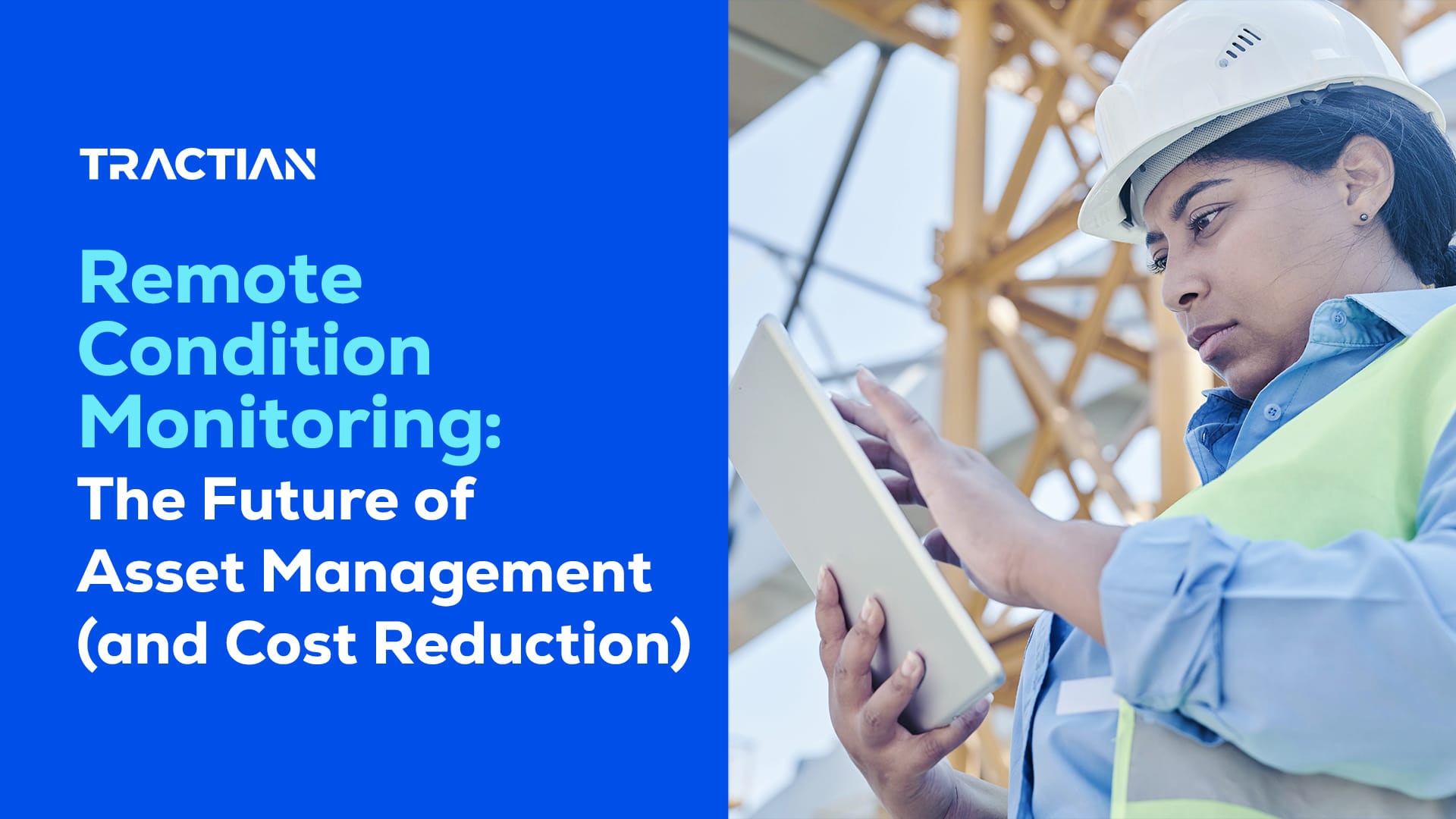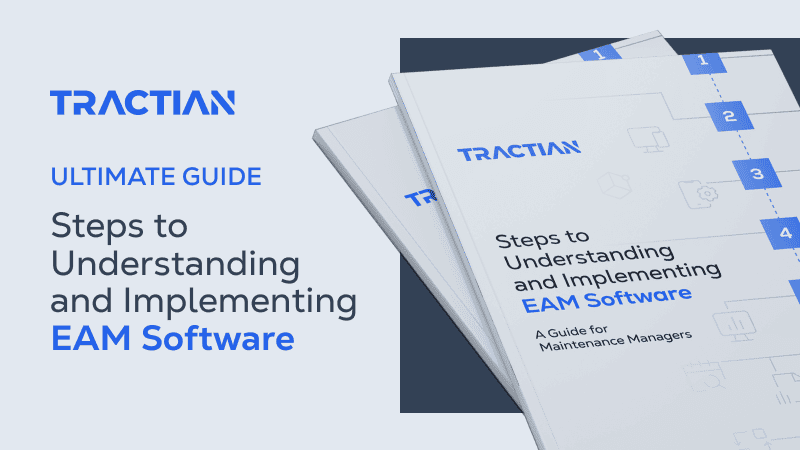Have you ever heard about remote condition monitoring? This is the type of proactive and data-driven operation strategy that’s already slashing unplanned maintenance costs by up to 40%.
This isn’t just about cost savings - it’s a revolution in how industries like power generation, processing, and mining manage production losses, translating into saved megawatts, barrels of oil, and natural resources, according to Processing Magazine.
That’s where Remote Condition Monitoring comes.
RCM is not just another buzzword, it’s the cornerstone for predictive maintenance strategies that are setting the new standard in asset management.
By monitoring equipment conditions in real-time, RCM empowers businesses to prevent downtime, optimize operations, and significantly enhance ROI.
As digital technologies permeate the competitive landscape, understanding and implementing RCM is no longer optional. It’s essential.
Ready to see how RCM can transform your operations and why it’s critical to stay ahead? Let’s dive deeper.
What is Remote Condition Monitoring?
Remote Condition Monitoring (RCM) it’s a powerful data-driven approach that lets you remotely monitor your equipment’s health and performance.
Think of it like having the ability to hear whispers on your equipment conditions - we mean, real-time intel on things like temperature, vibration, and energy use.
This data gets processed by clever algorithms, spotting early signs of trouble before they snowball into equipment failure.
But RCM isn’t just about avoiding disaster. It’s about optimizing your operations.
Instead of blindly following fixed maintenance schedules, remote condition monitoring lets you switch to a lean “just-in-time” approach.
So… Need a repair? You’ll know exactly when, avoiding unnecessary downtime and saving precious resources.
And you know: data-driven decision-making isn’t just a trend; it’s the future. As industries embrace the next Industrial Revolution, RCM shines with its real-time monitoring and predictive maintenance capabilities.
So, if you’re tired of reactive maintenance and unexpected breakdowns, remote condition monitoring is your answer.
It gives you the ability to see what’s coming, optimize your operations, and stay ahead of the curve in an ever-evolving industrial landscape.
RMC and Its Different Industry Applications
Remote condition monitoring it’s a game-changer across diverse industries.
The real power of RCM is to empower a company’s preventive maintenance strategy to the point it turns to predictive maintenance.
What do we mean by that?
If your machines whisper warnings before breakdowns, power plants humming smoothly thanks to real-time monitoring, and transportation fleets operating with peak efficiency, your factory floor is basically running - smoothly - based on real-time data.
But where does RCM fit? Basically, in industries all around.
Here, take this example:
In manufacturing, RCM acts as a crystal ball, predicting equipment failures before they disrupt production. We’re talking less downtime, lower costs, and happier customers.
The energy sector also has much to gain.
Here, an RCM strategy can help to optimize operations, ensuring uninterrupted power generation.
Imagine wind turbines sending real-time data on their health, allowing for early maintenance and preventing blackouts.
Transportation takes advantage of RCM for smarter fleet management.
Think trains monitored for potential issues, leading to fewer delays and safer journeys.
And no, remote condition monitoring isn’t just about fancy predictions.
It’s powered by technologies like vibration analysis, which detects imbalances in machinery, and thermography, which spots overheating components before trouble brews.
These technologies, coupled with IoT platforms, provide a holistic view of asset health, enabling proactive maintenance and maximizing efficiency.
So, the question remains: how will RCM advancements shape the future of your industry? Are you ready to unlock its potential and join the efficiency revolution?
How Does Remote Condition Monitoring Work?
So, how can you actually hear the ‘whispers’ of a CNC machine or understand what’s wrong with an oil pump?
Here’s the breakdown:
Step 1: Sensor Squad
Small sensors attached to your machinery become the data whisperers. They capture vast streams of information about your equipment’s health, like temperature changes in a turbine, vibration levels in a motor, or data about the oil conditions.

There are lots of real-time condition monitoring solutions out there - TRACTIAN’s, e.g., covers 100+ categories of rotating assets.

Step 2: Data Highway
This information travels in real-time, either to an on-site processing unit or the cloud. Think of it as a data highway carrying crucial insights.
Step 3: The Analysis Lab
Here’s where the magic happens. Sophisticated algorithms analyze the data, identifying patterns and predicting potential problems before they cause trouble.
It’s like having a team of data detectives uncovering hidden clues.
But how? You can utilize a CMMS or a EAM - solutions that help you better manage your assets and analyze its data - or a solution that encompasses both concepts, like TracOS™.
Step 4: Actionable Insights
The complex data gets translated into clear, actionable insights. Imagine an easy-to-use dashboard showing maintenance needs and recommendations.

- embedded in your machines capture insights about their health, like temperature changes or unusual vibrations.
- Clever algorithms analyze this data, predicting potential failures before they cause trouble.
- You get actionable insights, like early warnings and recommended maintenance actions.
The result? You can prevent costly repairs and unplanned downtime, saving significant time and money. Plus, you extend the lifespan of your equipment, maximizing your investment.
Think about it: would you rather scramble to fix a broken machine or have a cup of coffee knowing it’s running smoothly?
RCM gives you the peace of mind to focus on what matters most.
2. Efficiency Unleashed: Improved Operational Efficiency
Ever feel like your operations are running just a bit…off? Remote condition monitoring can help you identify and eliminate those inefficiencies. Here’s why:
By spotting issues early, you can allocate resources more effectively, preventing small problems from turning into big disruptions.
You gain a deeper understanding of how your equipment performs under different conditions, allowing you to optimize settings and processes for peak efficiency.
RCM helps you streamline maintenance activities, focusing your team’s efforts on what truly matters.
The result? Smoother, more efficient operations that produce more with less. It’s like having a secret weapon for maximizing your output and profitability.
3. Informed Decisions, Empowered Actions: Data-Driven Decision Making
Imagine having a real-time window into the health of your entire operation. That’s the power of RCM’s data-driven insights.
You get immediate access to comprehensive data on equipment performance, trends, and potential issues.
This data is clear, actionable, and easy to understand, empowering you to make informed decisions about maintenance, resource allocation, and overall operations.
No more guesswork or relying on outdated information.
Remote condition monitoring equips you with the most current and relevant data to make strategic choices that optimize your assets and operations.
It’s like having a trusted advisor constantly at your side, providing the information you need to make confident decisions that drive success.
Key Considerations for RMC Implementation
Remote condition monitoring holds the key to unlocking smarter operations and optimized maintenance.
But before you take the plunge, it’s vital to consider these crucial factors:
1. Finding Your Perfect Match: Choosing the Right RCM Solution
Selecting the right RCM system is like finding the ideal teammate.
Cost, scalability, and seamless integration with your existing infrastructure are all crucial aspects to consider.
Here’s where TRACTIAN steps in as your potential champion:
- Comprehensive app and top-of-the-market sensors: We offer a user-friendly app paired with industry-leading vibration and energy monitoring sensors, designed to seamlessly integrate into diverse industrial environments.
- Scalability for growth: Whether you’re a small operation or a large enterprise, TRACTIAN’s solutions scale with your needs, ensuring you’re never left behind.
- Cost-effective approach: We understand budget constraints. TRACTIAN offers flexible pricing options to fit your specific needs and budget, making RCM accessible to all.
Remember, the right RCM solution should be a collaborator, not a burden. Choose a system that empowers you, not complicates your operations.
2. Data Privacy: Building Trust, Ensuring Security
In today’s digital world, data security and privacy are non-negotiable.
When implementing RCM, ensure the data captured by sensors is encrypted and securely transmitted, preventing unauthorized access and safeguarding sensitive information.
Here’s how to prioritize data security:
- Choose a vendor with robust security protocols: Look for RCM solutions with industry-standard encryption and secure data transmission practices.
- Implement clear data access controls: Define who can access and use the data, and establish clear protocols for data sharing and storage.
- Stay informed about evolving regulations: Be aware of data privacy regulations in your industry and ensure your RCM solution complies with all relevant requirements.
Building trust with your team and stakeholders starts with prioritizing data security. Make it a cornerstone of your RCM implementation.
In TRACTIAN’s case, our sensor transmits data in an encrypted form (following AES encryption standards), which allows only TRACTIAN sensors and our servers to interpret the transmitted data.
3. Integration and Training: Equipping Your Team for Success
Even the most advanced RCM system is only as effective as the people using it. Seamless integration with your existing systems and comprehensive employee training are crucial for unlocking the full potential of RCM.
Invest in your team’s success with these steps:
- Ensure smooth integration: Choose an RCM solution that integrates easily with your existing IT infrastructure and maintenance software.
- Provide comprehensive training: Offer training programs that equip your team with the knowledge and skills to use the RCM tools effectively and interpret the data provided.
- Foster a culture of data-driven decision-making: Encourage your team to leverage RCM insights to optimize maintenance schedules, identify potential issues early, and make informed decisions.
Remember, your team is the driving force behind successful RCM implementation. Empower them with the right tools and knowledge to unlock its full potential.

Conclusion
Imagine a world where your equipment simply tells you its needs before they become costly problems. Where maintenance shifts from scrambling to fix breakdowns to proactively preventing them.
That’s the power of remote condition monitoring.
It’s not just about trendy technology; it’s about a fundamental transformation in how industries operate, moving to proactive, data-driven decision-making.
The benefits are undeniable:
- Reduced costs: Catch issues early and avoid costly repairs.
- Improved uptime: Keep your equipment running smoothly for maximum productivity.
- Data-driven decisions: Make informed choices based on real-time insights.
- Smarter asset management: Extend the life of your equipment and optimize its performance.
And TRACTIAN is here to guide you on this journey.
We offer cutting-edge RCM solutions designed for the modern industrial landscape. Our state-of-the-art sensors for vibration and energy monitoring provide the precise data you need, while our intuitive app makes it easy to access and understand.
Don’t wait for breakdowns to disrupt your operations. Embrace the proactive approach of RCM, predictive maintenance and AI-assisted maintenance with TRACTIAN.
Explore how our solutions can be tailored to your specific needs and unlock the full potential of your operations.
Contact TRACTIAN today and start your journey to smarter, more efficient, and more profitable operations.
FAQs about Remote Condition Monitoring
What is a remote monitoring system?
A remote monitoring system allows for the continuous monitoring of equipment and systems from a distance, leveraging sensors and internet connectivity to collect and send data to a centralized system for analysis, enabling proactive maintenance and operational efficiency.
What is remote condition?
Remote condition refers to the status or health of equipment or systems as monitored from a distance using technology. It enables the detection of potential issues or inefficiencies without the need for physical presence, facilitating timely interventions.
What are the three types of condition monitoring?
The three main types of condition monitoring include vibration analysis, which assesses the vibrational characteristics of machinery to identify anomalies; thermal imaging, which uses infrared cameras to detect overheating parts; and acoustic analysis, which monitors sound levels to identify changes indicating potential problems.
What is online condition monitoring?
Online condition monitoring is the real-time surveillance of machinery and equipment conditions using sensors and diagnostic tools. It allows for continuous data collection and analysis, enabling immediate detection of abnormalities and facilitating swift corrective actions to prevent downtime.


